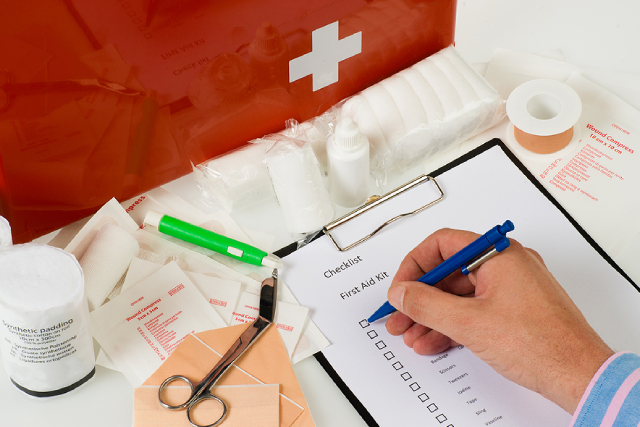
A packed suitcase, a carefully chosen itinerary, and a passport ready to go – these are often the top priorities when preparing for a trip. But one thing that slips through the cracks for many travellers is a proper first aid kit. Yet, this small bag of essentials can make all the difference when things don’t go to plan. A stumble on cobblestones, a sudden stomach upset, or even a blister from sightseeing can quickly put a damper on your adventure if you’re unprepared.
The truth is, accidents and illnesses don’t wait until you’re home again. Sometimes, you need quick relief while waiting for professional medical help to arrive. Other times, the right item from your kit is enough to ease the problem without involving medical experts at all. That’s why a well-thought-out travel first aid kit isn’t just a nice-to-have, but an essential companion for safe and stress-free journeys.
Why first aid kits deserve more attention
Many travellers assume that buying a ready-made kit is enough. While these kits are a good start, they’re often missing key items that suit your personal needs or the specific type of travel you’re doing. Trekking in the mountains, going on safari, or enjoying a city break all come with different health risks. Customising your kit ensures you’re covered for more than just the basics.
Another point worth noting is that different countries may have varying access to familiar medicines. What you can easily buy over the counter at home might require a prescription abroad or may not be available at all. Having your essentials on hand avoids unnecessary stress in a place where language barriers or local regulations could slow down your access to treatment.
Commonly forgotten essentials
When people think of first aid, they often imagine plasters, antiseptic wipes, and painkillers. While these are important, there are other less obvious items that can save the day. Here are some essentials travellers often overlook:
- Thermometer – A fever can be an early sign of infection, and having a thermometer helps you monitor whether it’s something mild or requires medical attention.
- Rehydration salts – Stomach bugs and food poisoning are common when trying new cuisines. These salts help replace fluids and electrolytes quickly.
- Tweezers and small scissors – Whether for removing splinters, cutting bandages, or trimming medical tape, these tools are more useful than you’d think.
- Blister plasters – Long days on your feet exploring can lead to blisters, and ordinary plasters rarely cut it.
- Antihistamines – Insect bites, allergic reactions to food, or unexpected rashes are easier to manage with antihistamine tablets or creams.
- Sterile dressings – These come in handy for more serious cuts or scrapes, especially when travelling in remote areas.
- Prescription copies – If you take daily medication, carrying copies of prescriptions can be vital in case you lose your supply or need more abroad.
Tailoring your kit to the trip
The beauty of a travel first aid kit is that it can be adapted to match your journey. For example, if you’re heading to a tropical climate, insect repellent and bite relief cream should be non-negotiables. Travelling to colder destinations? Add lip balm, hand cream, and cold remedies. Adventure holidays might call for stronger bandages and antiseptic solutions, while family trips benefit from child-friendly medicines like junior paracetamol.
For those with chronic health conditions, tailoring is even more important. While travelling with conditions, you might need to bring extra supplies of your prescribed medication, as well as emergency items like inhalers or epinephrine injectors. Don’t just rely on the assumption that everything can be replaced abroad – it often can’t.
Thinking beyond the basics
There’s also a bigger picture to consider. Sometimes, what starts as a minor problem can escalate quickly, especially when you’re in a location with limited medical facilities. For example, a high fever, severe injury, or unexpected medical crisis could mean you need urgent hospitalisation or even medical repatriation. Having a first aid kit won’t replace professional treatment, but it can stabilise a situation long enough until expert help is available.
In fact, the confidence that comes with carrying a proper kit often makes travel more enjoyable. You’re less likely to panic if you’re bitten by an insect in the middle of a hike, or if your child develops a sudden headache. Knowing that you have supplies to provide immediate relief until you reach a doctor can make a difference in keeping your trip on track.
Tips for keeping your kit ready
Packing a kit is one thing, and keeping it up to date is another. Medicines and creams do expire, so it’s worth checking your kit every few months, especially before a big trip. Replace anything past its date and refresh supplies that have been used.
A few other tips:
- Organise smartly – Use small pouches or zip-lock bags to group items (e.g., wound care, stomach remedies, allergy relief).
- Keep it accessible – Store the kit in your hand luggage or day bag rather than at the bottom of a suitcase.
- Consider local risks – Research common health issues at your destination and pack accordingly.
- Don’t overload – While it’s tempting to take everything, remember your kit should be compact and practical.
Conclusion
Travel is meant to be exciting, refreshing, and full of new experiences. But without the right preparations, even small health hiccups can derail your plans. A thoughtfully packed first aid kit helps you deal with the little things quickly, while also giving peace of mind if something more serious arises.
For bigger emergencies where professional care is urgently needed, EMA Global offers medical evacuation, repatriation, and air ambulance services, ensuring that no matter where you are in the world, help is never out of reach.

